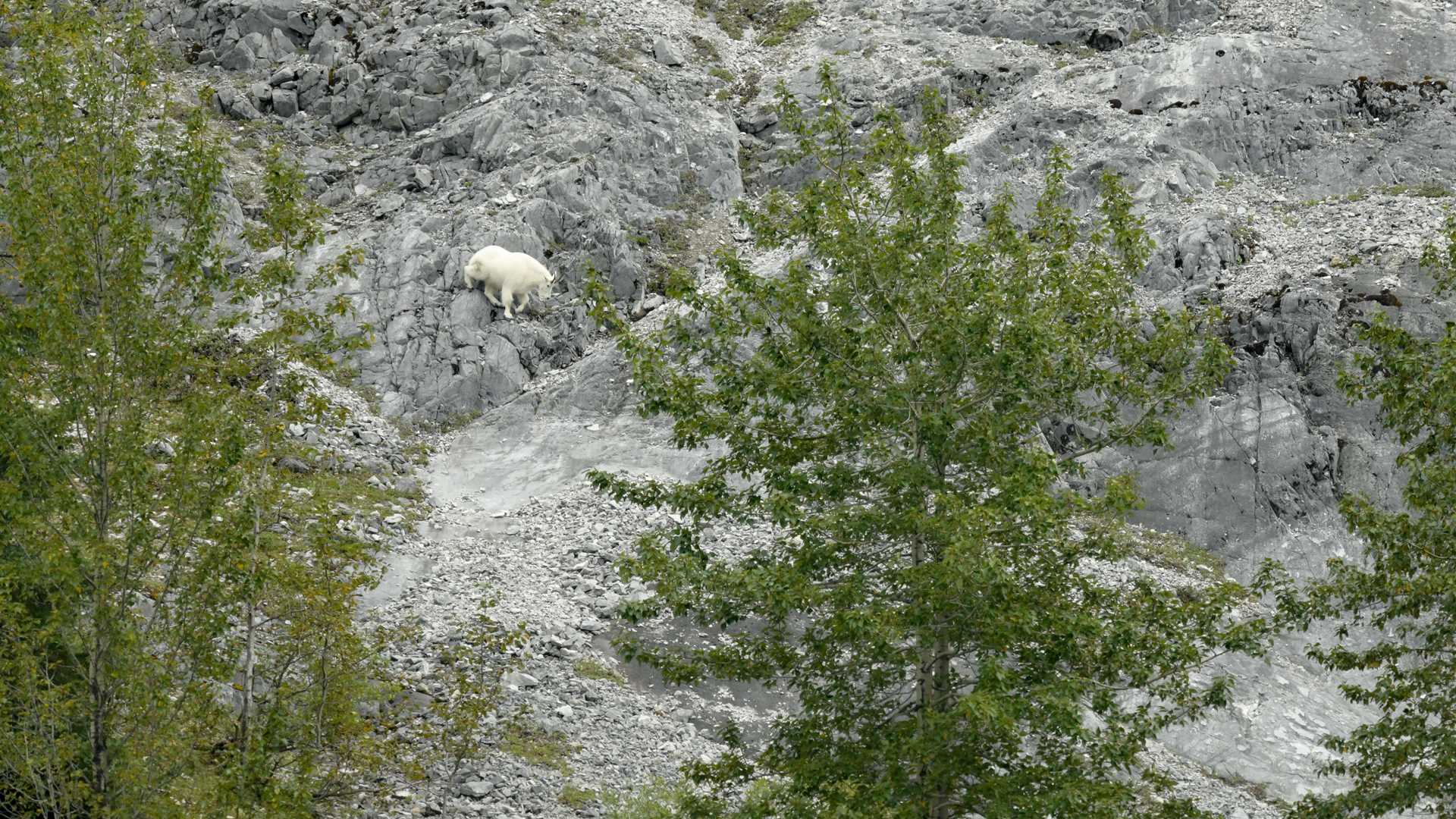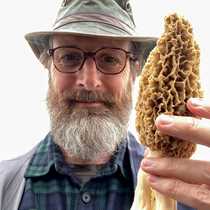Early risers aboard National Geographic Venture were greeted by calm seas, comfortably cool air, and heavy clouds this morning––perfect conditions for cruising in Glacier Bay National Park where blue ice nestles in high pockets between precipitous peaks, and flows for miles down winding valleys to finally meet the pulsing waters of the steep fiords of Southeast Alaska.
Before breakfast, a handful of coffee-sipping guests shared the perfect calm with a lone brown bear grazing on shoreline grasses. Whispering our wows to avoid alarming the browsing bruin, we marveled at the power in the large shoulder hump and rich, brown coat on this perfect symbol of power, prowess, and wildness. The scientific name for the brown bear. Ursus Arctos means, simply, “Bear bear.” It is the bear by which all other bears are measured, and this specimen, with her round belly sagging from summer excess, her coat glistening and thick from fat-rich summer salmon, perfectly typified her species. We could imagine no other way to be in her presence than the respectful, distant silence she deserved.
Following breakfast, we approached a sight that equaled the great bear in its ability to awe and inspire. Flowing 21 miles from her natal ice field on majestic Mount Fairweather, Margerie Glacier evoked bittersweet emotions as large chunks of electric blue ice were wrested from her face to crash into the corrosive brine lapping at her feet. How do we reconcile our fascination with, and desire to witness, these thundering calving events with the knowledge that every spire ejected from the face of this seemingly unstoppable frozen juggernaut is one small step backwards in time as Margerie recedes backwards into the geologic history books? One observer noted solemnly that he knew not why a tear trickled down his cheek. “I am so overcome with conflicting emotions that I don’t know if I am crying for joy over the awesome display of nature I am witnessing, or mourning the loss of this rapidly melting landscape, or both,” he said.
Emotions were still high in the afternoon when we approached South Marble Island where sea lions engaged in mock sparring, and puffins and cormorants fished for slippery, shiny snacks in the glacially cooled waters.
This final wildlife watching stop in the park ended on a delightful note when we spotted a pair of sea otters hauled out and resting on the rocks––a rare sighting, and one that left us warm and smiling at the end of an awe-inspiring day.







